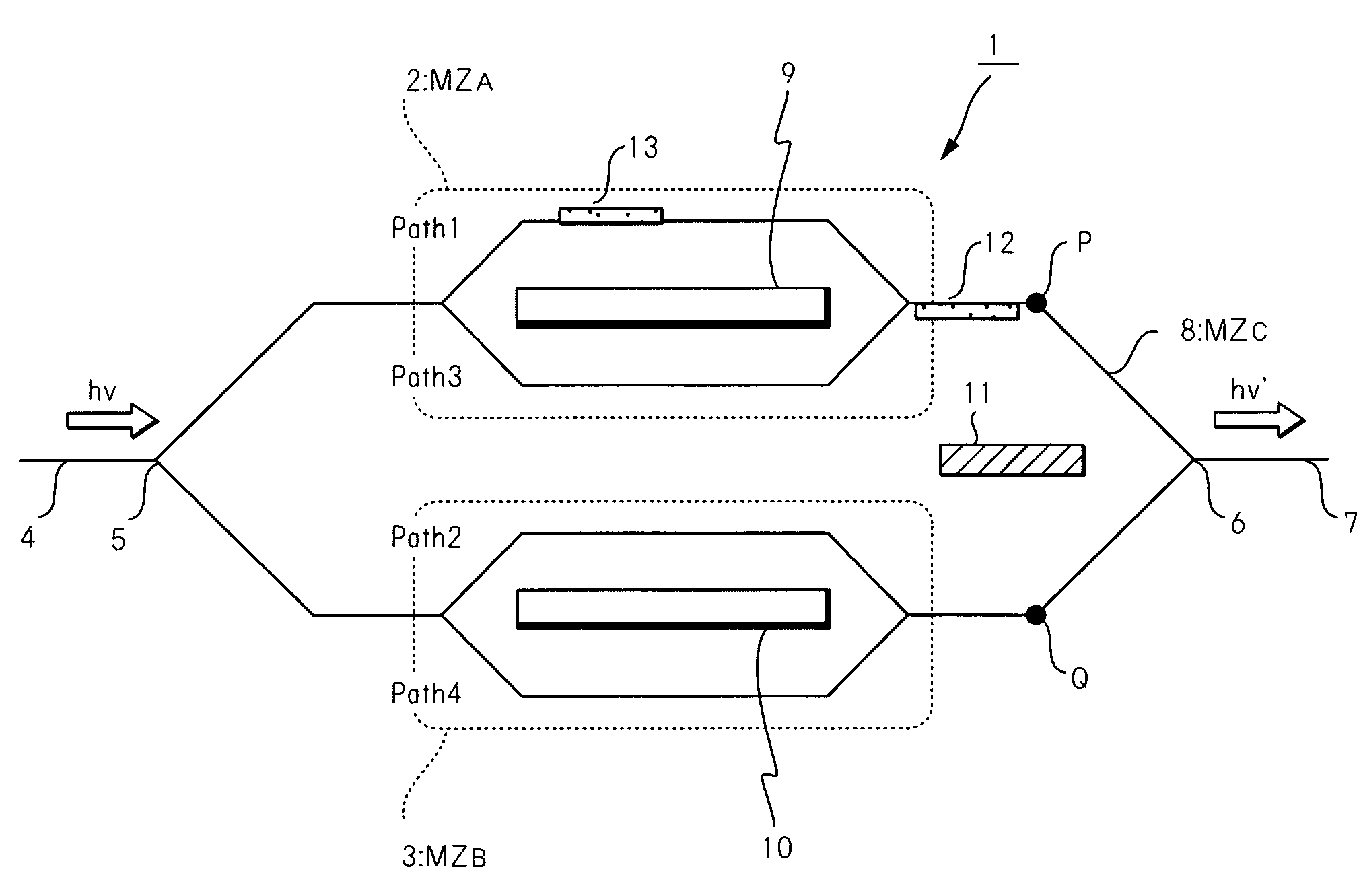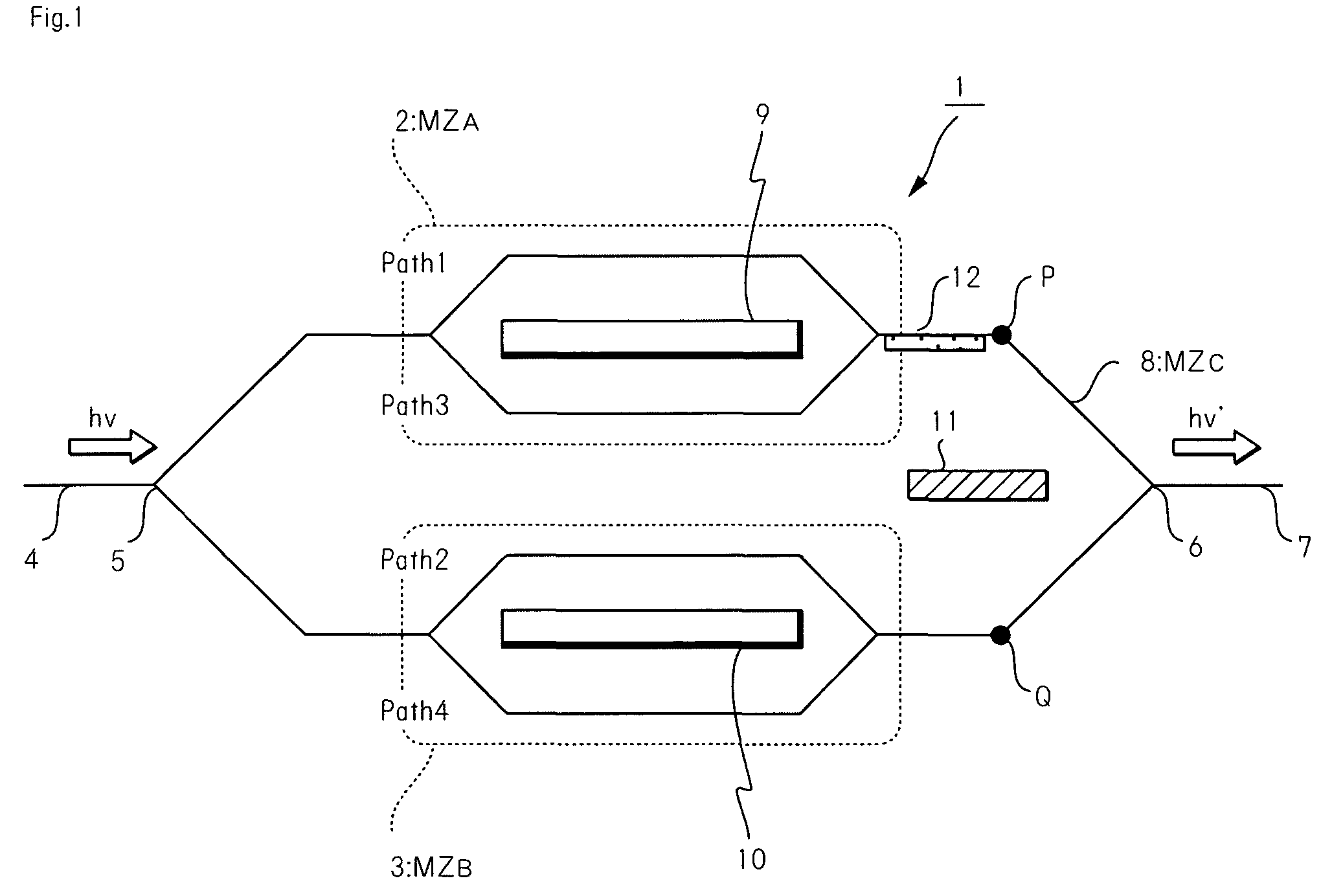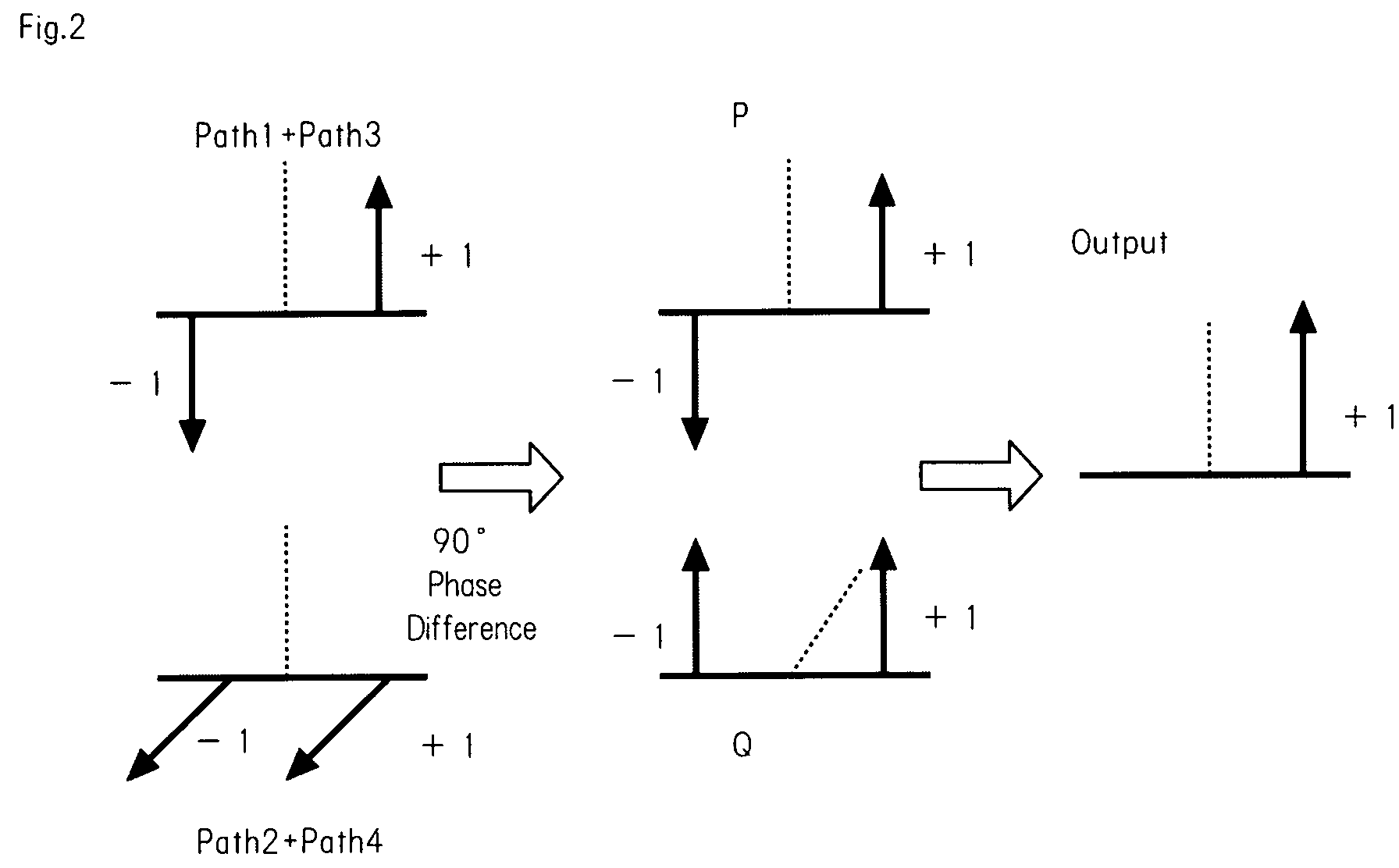Optical FSK/SSB modulator having intensity balance function
a technology of intensity balance and optical modulator, which is applied in the direction of light demodulation, instruments, electrical apparatus, etc., can solve the problems of preventing the extinction ratio from improving, and achieve the effect of suppressing non-desired components
- Summary
- Abstract
- Description
- Claims
- Application Information
AI Technical Summary
Benefits of technology
Problems solved by technology
Method used
Image
Examples
second embodiment
4. Second Embodiment
[0089]A preferable embodiment of the optical modulator is one further comprising an asymmetric directional coupler provided at the branching part (5) of the main Mach-Zehnder waveguide (MZC) (8). The asymmetric directional coupler controls intensity of the optical signal branched to the first sub Mach-Zehnder waveguide (MZA) so that the intensity of the optical signal branched to the first sub Mach-Zehnder waveguide (MZA) is higher than intensity of the optical signal branched to the second sub Mach-Zehnder waveguide (MZB).
[0090]If the intensity difference between components to be suppressed is small, the intensity modulator (12) is required to lessen the intensity of one of the component minutely. Further if optical intensity of an optical signal from the MZA is weaker than that from MZB, components to be suppressed cannot be effectively suppressed by the intensity modulator (12). On the contrary, the optical modulator described above can effectively use the int...
third embodiment
5. Third Embodiment
[0092]While not specifically shown in figures, the other preferable embodiment of the present invention is one further comprising the intensity modulator (12) provided on a waveguide portion between a combining part of the second sub Mach-Zehnder waveguide (MZB) and the combining part (6) of the main Mach-Zehnder waveguide (MZC). The intensity modulator modulates intensity of the optical signal propagating through the waveguide portion.
[0093]It is to be noted that an optical modulator further comprising the intensity modulator (12) provided on between the output part of the MZB and the combining part (6) is the other embodiment of the present invention. In this case, components desired to be suppressed can be adjusted and suppressed, regardless of which intensity is stronger between the optical signals from the MZA and the optical signal from the MZB.
fourth embodiment
6. Fourth Embodiment
[0094]FIG. 5 is a schematic block diagram showing an optical modulator according to the fourth embodiment of the present invention. As shown in FIG. 5, an optical modulator according to this embodiment further comprises an intensity modulator (13) provided on one of two arms composing the first sub Mach-Zehnder waveguide (MZA) or one of two arms composing the second sub Mach-Zehnder waveguide (MZB) or two or more of the waveguides. The intensity modulator (13) modulates intensity of the optical signals propagating through the waveguides
[0095]The arm (Path of FIG. 1) whereon the intensity modulator (13) is provided may be either one of Path1, Path2, Path3, or Path4. It may also be either one of Path1 and Path2, Path1 and Path3, or Path1 and Path4. It may also be either one of Path2 and Path3, or Path2 and Path4. It may also be Path3 and Path4. It may also be Path1, Path2 and Path3. It may also be Path1, Path2 and Path4. It may also be Path1, Path3 and Path4. It ma...
PUM
| Property | Measurement | Unit |
|---|---|---|
| width | aaaaa | aaaaa |
| width | aaaaa | aaaaa |
| thickness | aaaaa | aaaaa |
Abstract
Description
Claims
Application Information
 Login to View More
Login to View More - R&D
- Intellectual Property
- Life Sciences
- Materials
- Tech Scout
- Unparalleled Data Quality
- Higher Quality Content
- 60% Fewer Hallucinations
Browse by: Latest US Patents, China's latest patents, Technical Efficacy Thesaurus, Application Domain, Technology Topic, Popular Technical Reports.
© 2025 PatSnap. All rights reserved.Legal|Privacy policy|Modern Slavery Act Transparency Statement|Sitemap|About US| Contact US: help@patsnap.com



